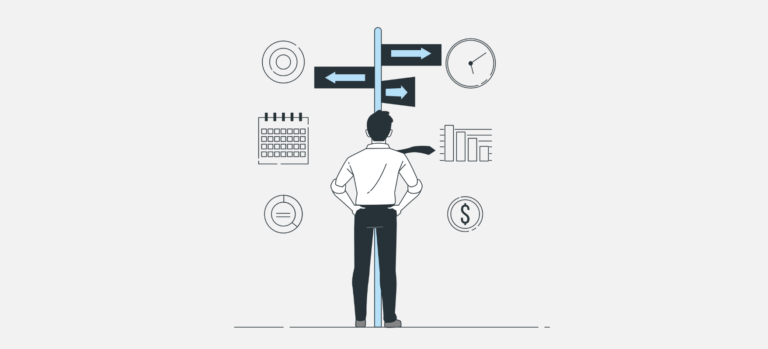1st pillar: AVS/AI/PC
The 1st pillar forms the basis of the Swiss social security system. Its main objective is to ensure a living wage for the elderly, survivors and the disabled. The aim is not to maintain the usual standard of living, but to avoid economic insecurity.
AVS (old-age and survivors' insurance)
The AVS is intended for anyone who has reached legal retirement age or the survivors of a deceased person (spouse, children) in Switzerland.
It is paid in the form of a monthly pension calculated on the basis of the income contributed and the length of contribution period (scale 44).
All residents and workers in Switzerland are obliged to contribute to the 1st pillar from the age of 18 (for employees) or 21 (for those not in gainful employment). Contributions are compulsory until the legal retirement age.
AI (Invalidity Insurance)
The AI (or disability insurance) is intended for people who, due to a disability, are unable to work. disabilityare no longer able to work in full or in part.
DI provides a disability pension, vocational reintegration assistance and rehabilitation measures.
PC (Supplementary benefits)
AHV and IV pensioners whose pensions are insufficient to cover their basic needs may be eligible for supplementary benefits, which can be defined as a "supplementary pension". financial support to supplement income and cover expenses such as housing and healthcare.
The 2nd pillar: occupational benefits or BVG
The 2nd pillar of the Swiss pension system is a compulsory insurance for employees and optional for the self-employed. Its purpose is to supplement 1st pillar benefits in order to maintain a normal standard of living after retirement, in the event of disability or for the survivors of a deceased insured person.
Purpose and operation
The purpose of the 2nd pillar is to enable policyholders to keep approximately 60 % of their previous income in retirement, when combined with 1st pillar benefits. It is based on a capitalization system: each insured saves for himself, and the contributions, together with the returns generated by the funds, constitute a capital of individual benefits.
2nd pillar benefits are therefore not financed in the same way as other benefits. united as in the 1st pillar, but are directly linked to the savings accumulated by the insured.
Who is concerned by the 2nd pillar?
Membership of the 2nd pillar is mandatory for employees whose annual income exceeds a minimum threshold, set at CHF 28,680 in 2024. The self-employed are not obliged to join the scheme, but can do so on a voluntary basis. For those earning less than the minimum threshold, there are non-compulsory occupational pension schemes.
Contributions and financing
The 2nd pillar is financed by contributions shared between employer and employee. The employer's share must be at least equal to that of the employee, but many companies contribute more to provide better benefits. The contribution rate increases with the age of the insured, which makes it possible tointensify savings as retirement approaches.
Dues consist of two parts:
- Old-age savings : a portion of each contribution is paid directly into the policyholder's individual account.
- Disability and death risks: a fraction of contributions is used to finance disability benefits or survivors' pensions in the event of death.
2nd pillar benefits
2nd pillar benefits take several forms:
- Old-age pension : When you reach retirement age, you can choose to receive a monthly pension or a lump-sum withdrawal. The annuity is calculated on the basis of the capital saved and a conversion rate set by law.
- Disability pension : In the event of disability, the insured receives a pension to compensate for loss of income. It is financed by the portion of contributions earmarked for risks.
- Survivors' pension : In the event of the insured's death, the designated beneficiaries (often the spouse or children) can receive an annuity or a lump sum.
3rd pillar: unrestricted and restricted pension plans (3b and 3a)
The 3rd pillar is the optional of the Swiss pension system, designed to complete 1st and 2nd pillar benefits. It is based on private savings and offers the flexibility to adapt pension provision to individual needs and objectives. It is particularly important for people wishing to fill the gaps or plan a more comfortable financial future.
Objective of the 3rd pillar
The purpose of the 3rd pillar is to enable individuals toanticipate personal needs not covered by the first two pillars. The aim is to finance life projects, build up savings for retirement or provide a safety net in the event of an unexpected event.
It is particularly relevant for self-employed people who do not contribute to the BVG and for those who want to improve their quality of life in retirement.
3a: Tied pension plan
The pillar 3a is specially designed for retirement and governed by strict rules. It offers significant tax advantages, as contributions paid into a 3a account are tax deductible. deductible from taxable incomeThis reduces the tax burden. In 2024, the maximum amount of deductible contributions is CHF 7,056 per year (CHF 7,258 for 2025) for persons affiliated to a 2nd pillar, and of CHF 36,883 for the self-employed without occupational benefits. In addition yields generated by the funds saved are not not taxed as long as the money remains on the account.
However, 3a funds are blocked until a minimum age corresponding to the legal retirement age, except in exceptional situations such as the purchase of a principal residence, definitive departure from Switzerland, disability or the start of a self-employed activity.
3b : Free pension plan
The pillar 3b is highly flexible, allowing you to save or invest without contribution limits or withdrawal restrictions. The money can be used at any time, for example, to finance a project, children's education or to deal with unforeseen circumstances.
It includes products such as savings accounts, life insurance and financial investments. Visit tax benefits are limitedSome cantons offer discounts for life insurance. The 3b is ideal for those who want a free savings and adaptable, or who are looking to supplement their retirement savings without the constraints of 3a.

Frequently asked questions
A foresight gap is the difference between the income needed to maintain one's usual standard of living and the benefits paid by the 1st and 2nd pillars in Switzerland, particularly in the event of retirement, disability or death.
A pension gap can be filled through 3rd pillar contributions, 2nd pillar purchases, life insurance or personal investments.
Swiss pension provision is a social security system designed to guarantee an income in the event of retirement, disability or death. It is based on the three-pillar system:
- State pension scheme (1st pillar),
- Occupational benefits (2nd pillar),
- Individual pension provision (3rd pillar).
- 1st pillar Anyone living or working in Switzerland.
- 2nd pillar Employees earning more than CHF 28,680 a year. The self-employed can join voluntarily.
Pillar assets can be withdrawn :
- 1st pillar : Under certain conditions, annuities can be exported, depending on bilateral agreements.
- 2nd pillar The capital can be withdrawn, except if you remain in the EU/EFTA, where it will be blocked for the compulsory part.
- 3rd pillar 3a Funds can be withdrawn in full.





